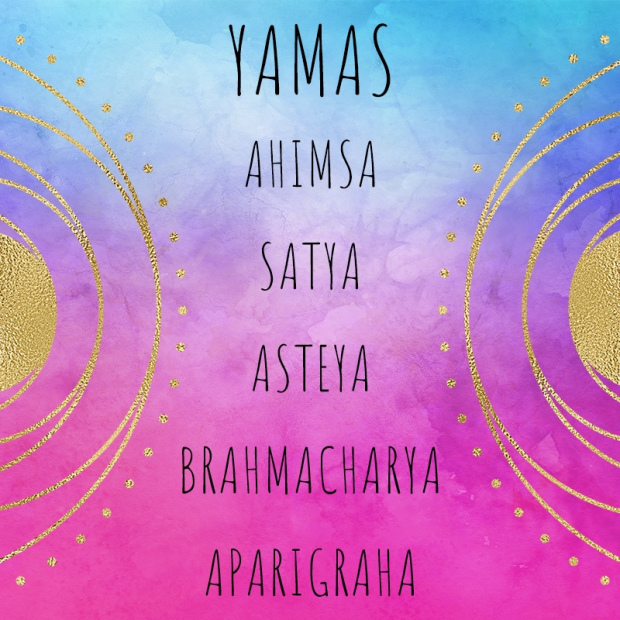Why Yoga? And let us Begin…

In our Yoga Sutra discussion group last Sunday we discussed the sutras in the second chapter that lead up to the 8 limbs of yoga. It was a great recap on some of the foundational philosophies of yoga and why we need the eight aspects of yoga as a practice. First, the relationship of purusa (“the seer”/pure consciousness) and Prakrti (“the seen”/Nature) and the layers we must explore to understand them. Second, the obstacle of spiritual ignorance (Avidya) we carry by identifying more with Prakrti than purusa. Third, development of discriminative knowledge and awareness as the key to dispelling the ignorance and uncovering the truth of our pure being within.
The definition of yoga is to “still the fluctuations of consciousness” and what causes those fluctuations is our attachment to all the aspects of Nature (Prakrti) that are always changing and fluctuating. Yoga practice itself is the development of knowledge and understanding of all layers of our being so that we may come closer to knowing who we truly are, the unchanging and pure consciousness of purusa within. We know this process doesn’t happen overnight and we first have to recognize our ignorance to even begin to learn. Chris Saudek shared some great reflections from “The Essence of Yoga” by Bernard Bouanchaud.
And, the knowledge that the practice of yoga develops is complete, covering our entire being. Each “limb” of yoga is there for us to encourage awareness from external action to the core of being and back again. And this is where we ended, listing the eight aspects of yoga…
The first aspect of yoga encompasses moral principles called the YAMAS. These are what we will discuss at our next meeting on Oct 25th. NOTE – we will not be following the sutras in order for these next couple of meetings.
- The YAMAS – translations from Light on the Yoga Sutras of Patanjali by BKS Iyengar
- II.30 – non-violence, truth, abstention from stealing, continence, and absence of greed for possessions beyond one’s need are the five pillars of yama
- II.31 – Yamas are the great, mighty, universal vows, unconditioned by place, time, and class
- II.35 – When non-violence in speech, thought and action is established, one’s aggressive nature is relinquished and others abandon hostility in one’s presence
- II.36 – When the practitioner is firmly established in the practice of truth, his/her words become so potent that whatever is said comes to realization.
- II.37 – When abstention from stealing is firmly established, precious jewels come.
- II.38 – When the practitioner is firmly established in continence, knowledge, vigor, valor, and energy flow to him/her.
- II.39 – Knowledge of past and future lives unfolds when one is free from greed for possessions.
When we look at this first “limb” of yoga, we have to become very aware of our actions and intentions in order to reap the benefit that each Yama brings. For discussion at the next meeting, look at each of these Yamas and see if you can come up with an example in yoga or in life where you might need to develop them – subtle or gross, physical or mental, emotional or spiritual. The knowledge we gain in yoga must be at every level and at every layer to be complete.